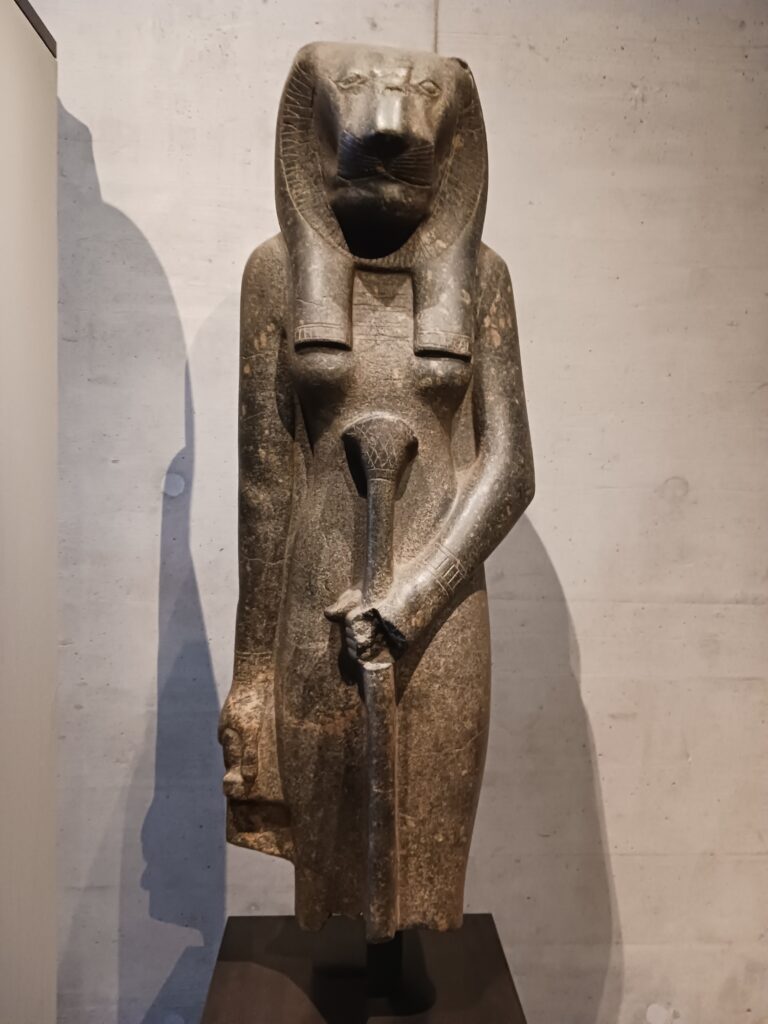(a little disclaimer, these pictures of Egyptian mythologies are from a museum in Munich… relevant nonetheless)
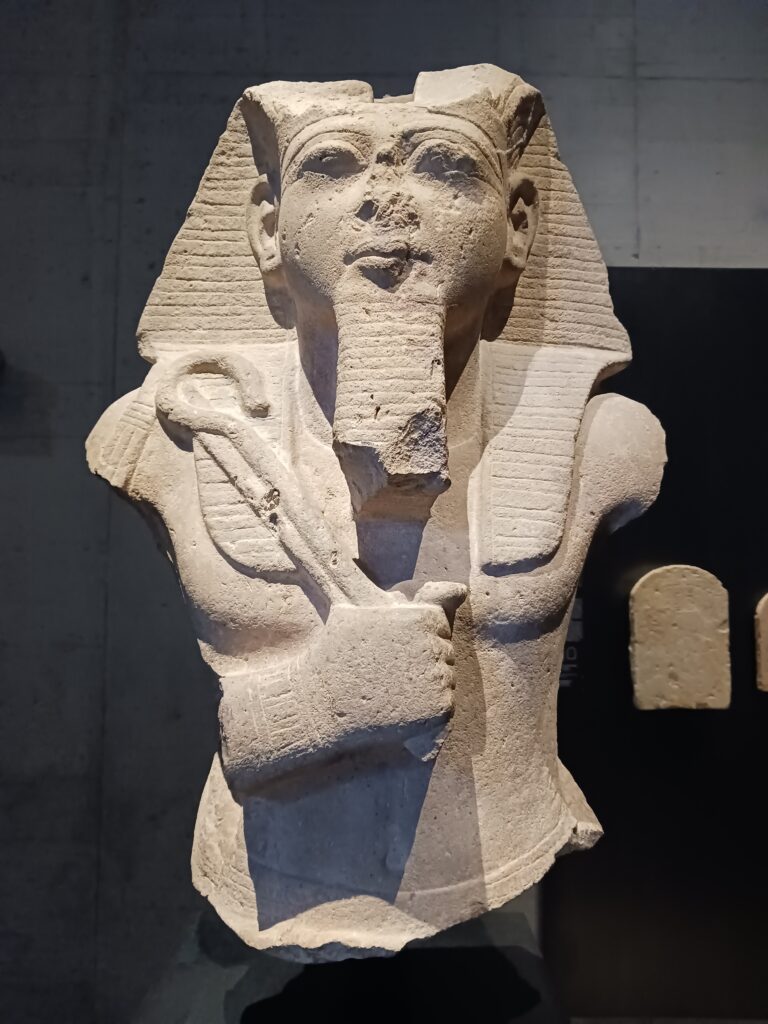
A pharoh, according to Egyptian mythology, is by a divine father, born of a mortal mother. His divine nature also made him the only mortal capable of standing in the presence of gods.
This is not unique to Egyptians, however. I don’t think.
In the book, The Dawn of Everything, an anthropologist and archaeologist duo discuss human social structures, particularly hierarchical governance. While a few societies chose not to have a hierarchical and unequal structure, many did, as with kingdoms where the king was king because of a connection to the divine.
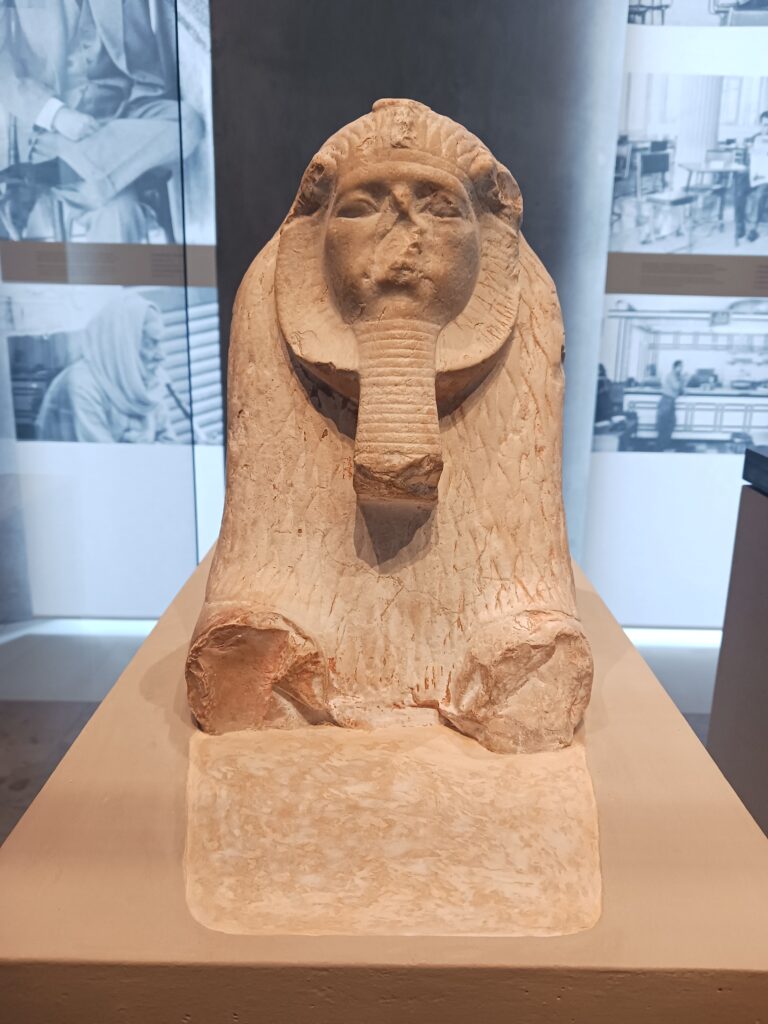
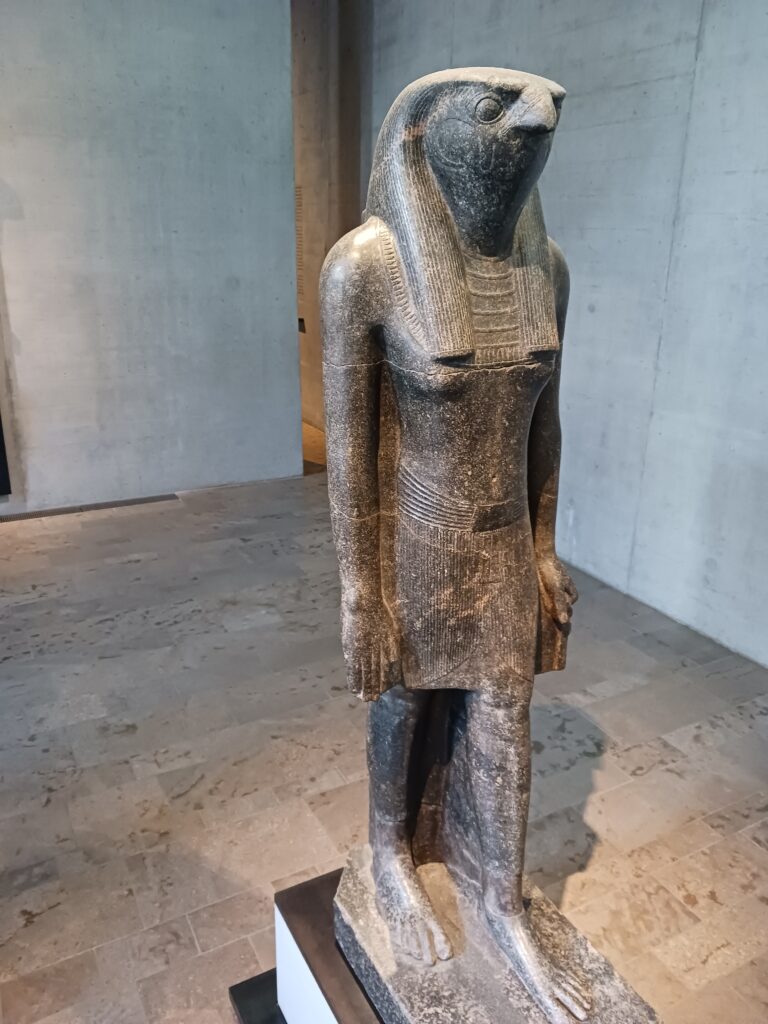
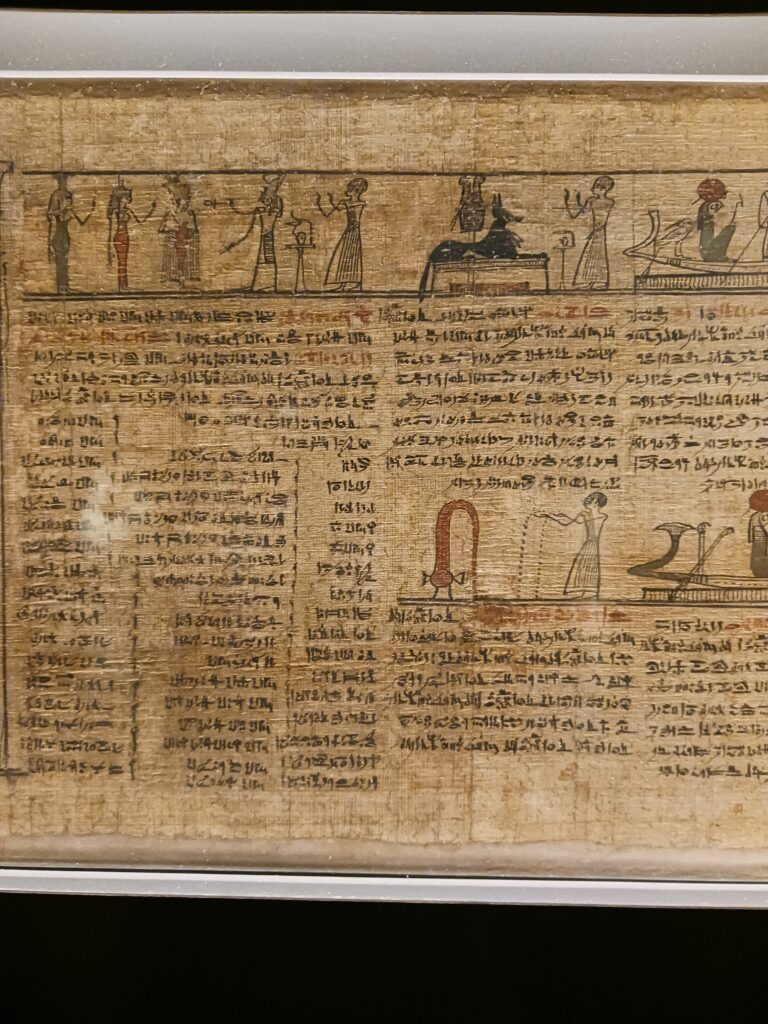
An afterlife guide that Egyptians called ‘The Book of Going Out by Day’ and was a collection chosen anew for each individual. It was designed/expected to familiarize the deceased with the underworld and protect from danger, and to justify the transition as a blessed dead. For this latter end, he had to answer for his deeds on earth before the Judgment Hall of the Dead and Osiris.(Lord of the Netherworld).
An example prayer translated: ‘O you gods who are in Abydos, the whole and complete Hall of Judgment–come joyfully to me as I come near. I have seen the father Osiris–I have been judged…’
